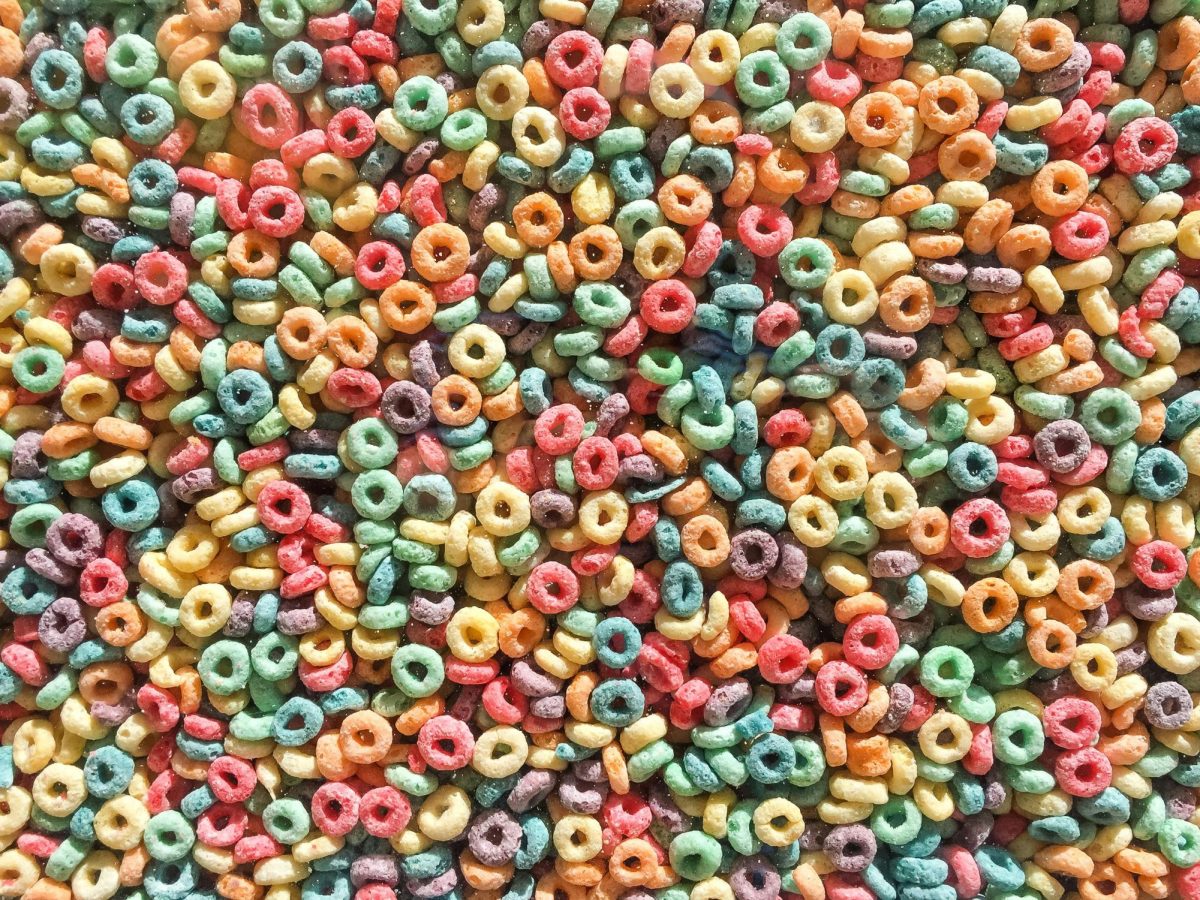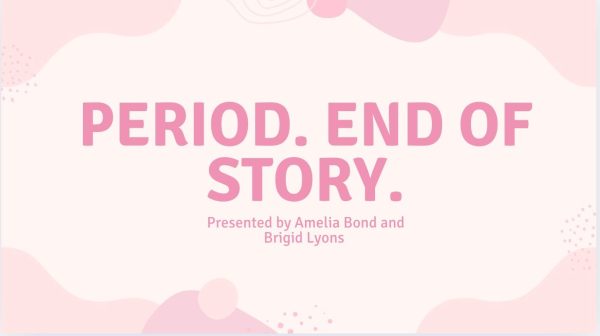The Paradox of Health – Angie’s Original Oratory
My first day of seventh grade I was bursting with excitement because I had my favorite class first period: health. Yeah, you heard me right. Health. Twelve-year old me had big aspirations of becoming a doctor so I sat down at my desk eagerly. Although I was expecting to learn about the human body, that was when my teacher stood in the front of the class, holding up a cereal box. And she turned the box to its side, revealing its nutrition facts label. Pretty quickly, she had told us this brand of cereal was bad food.
And I was confused by this because personally, I think Froot Loops are really good. But soon, I cut them from my menu along with numerous other foods deemed “bad”. And in order to be healthy, I felt I needed to restrict my intake of these “bad” foods. This value judgment placed on the food I ate very quickly became a value judgment I placed on myself. Eating “bad” foods made me feel bad about myself, or like I was doing something wrong.
I’ve since learned that my experience in that health class was not a unique one. In schools,“health” has become a paradox. Because health classes, while supposed to be educating children about health, seem to be doing just the opposite by encouraging unhealthy thinking and behaviors. According to psychologist Rachel Millner, “much of the conversation about healthy eating in schools centers around the idea of “good food vs. bad food” and teaches students how to identify these “bad” foods through reading food labels and counting calories.”
This teaching narrowly defines health as eating certain foods, and in doing so, the convoluted version of “health” kids accept can lead them to developing low self-esteem or eating disorders, which are objectively unhealthy behaviors. So today, we’ll first look at the problematic tactics used by schools to teach students about healthy eating. Second, we’ll understand the dangerous effect this rhetoric has on kids’ relationship to food. And finally, we’ll discuss ways schools can teach a truer version of health.
According to the World Health Organization, health is defined as “a state of complete physical, mental, and social well-being”. However, according to Roger Memorial Hospital, 15% of patients in eating disorder treatment can credit school health programming as a trigger for their eating disorders.
This contrast between the definition of health and the reality of health classes exemplifies how oxymoronic the title of “health class” is. See, when foods are defined as “good” or “bad”, this attachment of moral value creates a hierarchy. This sends the message that we should avoid or fear some foods and that eating foods deemed “bad” is shameful. For example, some curriculums may even use gross-out tactics, like crude demonstrations of globs of fat to scare kids away from “bad” foods.
Teaching health like this is not only inherently problematic, but it is insufficient. What about students experiencing food insecurity, meaning there is limited access to affordable nutritious foods at home? Or diabetic students who need to have foods with higher sugar levels on hand in case their blood sugar drops? This thinking does not even consider that all teens are in a period of growth which means their weights and diets fluctuate naturally. Health encompasses much more than simply eating “good” or “bad” foods.
Now that we understand the problem of “food moralization,” let’s discuss the effects this has on children. Psychologists agree that adolescence is the most impressionable years of our lives, so it’s no surprise that the common age of onset for eating disorders is between 12 and 25
According to Johns Hopkins, eating disorders have the highest risk of death of any mental illness. 50% of teenage girls and 30% of teenage boys use unhealthy weight control behaviors in order to alter their weight. Young people with anorexia between the ages of 15 and 24 are 10 times more likely to die than their peers of the same age. But eating disorders aren’t the disease; they’re a symptom of misinformation about eating. Because the fact is, teachers don’t set out with the intent to give their students eating disorders. But practices like counting calories, reading food labels, and categorizing foods are so normalized that we don’t even initially realize how problematic these behaviors are when they show up in our curricula.
In the years after that seventh-grade health class, I came to believe that eating “good” foods would lead me to obtaining a “good” body. A body that was more righteous because it was thin. A body whose value was equal to a number on the scale. And quickly, health in my mind, became equated to thinness. I’d pass up fun outings with my friends if they involved dinner plans, and I’d spend lunches at school sitting alone to avoid the question “Why aren’t you eating?” And as awful as it was to be missing out because of my eating disorder, it was trumped by my crippling fear of food. My definition of health was so confused, I believed eating something like Froot Loops would disrupt it completely. And this confused definition of health led me to the worst state of mental and physical health I’ve ever been in.
And I’m not arguing that Froot Loops have the same nutritional value as an apple. Simply put, these foods just have different nutrients. But, as said in an article by nutritionist Sara Remmer, “As soon as we start villainizing those less nutritious foods and pressuring our kids to eat those “good” foods we create a situation where kids feel guilty, or “bad” for eating.”
In fact, in order for schools to be active in preventing eating disorders, it is crucial that the language we use surrounding food choices change. We need to stop defining foods as good and bad and start embracing food neutrality.
Food neutrality means essentially that all foods are morally equal. No food is inherently “good” or “bad” (… except pineapple on pizza… there is a right answer). And to achieve food neutrality, we must focus primarily on three things.
The first is the language we use to describe foods. Instead of labeling foods as “good” or “bad”, use words like “satisfying” or “delicious”, words that don’t place moral value onto a certain food. Because there are good things to be said about every food. An apple is nourishing, and energizing while Froot Loops give you a short burst of energy, and are delicious. So by adjusting our language, we can ditch words that cause guilt and instead use words that empower kids to make their own informed choices on what they want to eat.
Which leads me to the second point of the solution: promoting intuitive eating. According to the National Eating Disorder Association, intuitive eating is trusting your body to make food choices that feel good for you, without judging yourself. We are all born with the ability to intuitively know when to eat, and when to stop eating. But this intuition can become confused when we’re exposed to diet culture, a culture that is reinforced through food moralization. For classrooms to promote intuitive eating, they need to reject diet mentality and teach kids to honor their intuition.
And lastly, teaching methods that create guilt and shame need to be left behind. I wish with all my heart that I could go back to seventh grade and tell myself, this girl who was terrified of eating, that she is deserving of fueling her body with food that made her feel good. And my hope for kids like me is that our classrooms will start reflecting these values. Because the issue of disordered eating often starts in our classrooms; however, it is in these very classrooms where myths about food moralization can be dispelled. Health classes have the capacity to do a world of good by teaching students that all foods have a place on their plate if they so choose. I, for one, still start every day with a fulfilling bowl of Froot Loops.
Photo by Etienne Girardet on Unsplash










